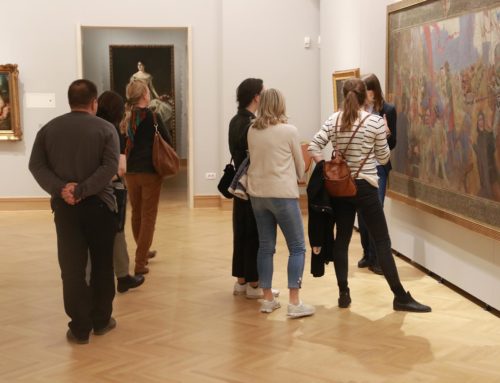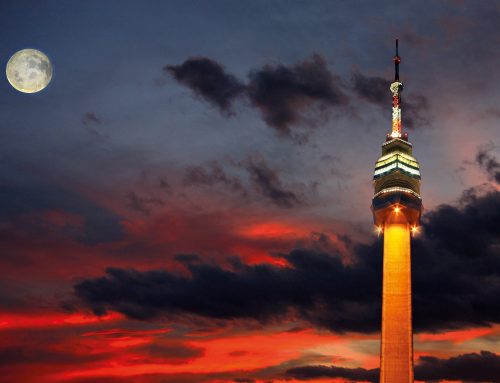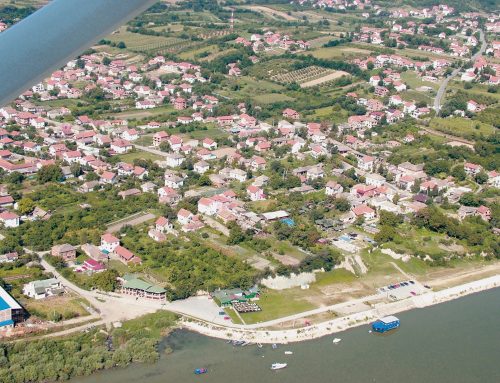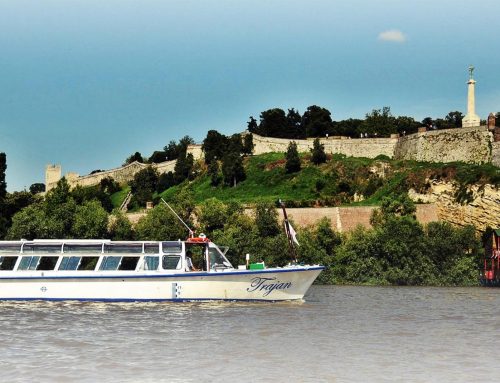A Thematic Theatrical Piece of the Museum of Belgrade City
As one of the rare unterminated traditions of the Serbian nation, the so-called Krsna Slava (a holiday celebrated by the Orthodox Serbian family in honor of its Patron Saint), has been inscribed on the UNESCO Representative Intangible Cultural Heritage List since 2014. Since August this year, a theatrical piece has been performed as part of Belgrade’s regular tourist programs in the Residence of Princess Ljubica, vividly presenting visitors how a Serbian Slava is celebrated.
We do not set off on journeys to other geographic latitudes and longitudes to experience the same thing we have at home. We travel to explore new cultures, tastes and customs. And, in order to gain a true experience of some city, it is not enough to consistently check a list of must-see attractions. So, for example, for a traveler to feel the heart and soul of Belgrade, somewhere in-between Kalemegdan Park and Skadarlija, he should also have a snack at the Delicatessen Monday event at “The City” Cultural Center, buy himself a ticket at the New Year’s Čumić Raffle or, even more intimately – be a guest at a Serbian Slava. But what are the chances of something like that? Well, quite certain. It is enough for him to happen to be in Belgrade on Sundays at 2 pm. If, at that time, he is heading for the Residence of Princess Ljubica, he will be welcomed at the door by the host of the Slava, with consecrated wheat and wine in his hands, and the accompanying toast: May we always celebrate Slava, may we never forget Slava, may we always meet in happiness and joy, may we always remember each other! Cheers!

Everyone is welcome!
Two institutions of the City – The Belgrade City Museum and The Tourism Organization of Belgrade enabled us to be guests at Slava for one day. It is an excellent opportunity for us to confirm to foreign visitors that the Serbs are a hospitable nation, and also to learn ourselves something more about this centuries-old Serbian celebration. The customs pertaining to Slava have, for sure, been modified and personalized through their transmission from one generation to another, so one such program is a good opportunity for us to get to know them in their original form. Marko Panajotović, an actor and the host of Slava, told us who the “Serbian Slava” program is actually intended to:
– In fact, this event exists so as to make young people in Serbia remind themselves of the traditional values that our predecessors used to respect. It is also important to highlight that, when there is a need, the program is also performed in English so that people throughout the world could also hear of this custom, speaking of which we are really unique. As well as our people abroad so that they don’t forget their roots.
Even if you are not a tourist, even if you don’t need an extra class in tradition, “Serbian Slava” is, among other things, a perfect Sunday matinee – the Slava table groaning with food and drink, interesting stories, a visit to the former home of Princess Ljubica Obrenović, in the company of curator Marko Živanović, having a look around the current exhibition…
An Authentic Experience
“Serbian Slava” is so devised that it makes us truly feel as guests at the Slava. At the entrance to the Residence, actor Marko Panajotović welcomed us as the host and walked us to the ceremonially laid Slava table groaning with food and drink on the upper floor of that edifice. When all guests gathered around the table, as the customs impose, we were served one after another with wheat, wine, brandy, Slava doughnut, black coffee, with a bit of chatting in-between.
The program is interactive, and how it will be performing also depends on who is the one sitting next to you at the table; so, both from the host and from other guests, we came to know since when the Serbs have been celebrating Slava, how many saints protect Serbian families, why is it wheat that is served, what the letters on the Slava cake stand for, and what the flame of the candle represents, why the Ascension Day was chosen as the Slava of the Capital City…
Since when have the Serbs been celebrating Slava?
This custom is believed to have originated from as early as the era of paganism. When, under the influence of Byzantine, the Serbs received Christianity, it was very difficult for them to renounce their old customs. In exchange for the family-guardian pagan god, the host of the house would choose one Christian saint, the one on whose day he had been baptized, to be the protector of his home.
Why is the Ascension Day Belgrade’s Slava?
As every family celebrates and respects its patron saint, every place in Serbia also has its own Slava. Ever since Despot Stefan Lazarević gave Belgrade the status of the capital city in 1403, Belgrade has been celebrating the Ascension Day – The Feast of the Ascension of Jesus Christ as its Slava in the honor of the revival and elevation, i.e. ascension of the city.
After we had got the answers to the questions of the Slava customs and characteristics, which we had used to take for granted before, in the end, the host also read to us a passage from a humorous description of Slava by writer Dragomir Janković:
“Once, on this day, my grandpa every time used to be at the barber’s already at seven in the morning to have him apply Kölnisch wasser on his cheeks, fashion his sideburns and remove all the small hairs. At eight, he was in Sarajevska Street, at Koča Djordjevski’s bakery, to pick up a roast piglet, on whose small leg a greasy piece of cardboard was dangling – For the Menu. At the same time, my grandma was ironing my curly hair to be able to part it and sprinkling me with the Black Cat, so that the child could also smell of the holiday. While doing that, she was trying to convince me to kiss my uncle Ćirko’s hand and recite something from ‘Djulići uveoci’ (“The Wilted Roses”) poetry book to her, although she was deaf… At noon, Priest Vasa would come to give his blessing and to preside over the cutting of our Slava cake. I remember him asking the same thing every year: What’s this so nice smell in the house? And my grandma answering: The child, smelling of the Black Cat… Around five, the lunch ended with cookies being served, and around six already, our godparents, friends, and more relatives were arriving for another round of eating and drinking. Well, that’s how it was once. And I’m telling you all this so that the parvenu Serbs can hear how old Serbs living in the cities celebrated their Patron Saint’s Day –Slava – while religion was the opium of the people.”
Text: Dragana Barjaktarević
Photo: Museum of Belgrade City
INFO: www.mgb.org.rs/desavanja/program-srpska-slava & www.tickets.rs/partners

All culture events, interesting sightseeing tours will bring you closer to the traditions of Belgrade and will be much more enjoyable if you choose for yourself a nice and intimate place to stay. We recommend that you visit the reservation website Apartments in Belgrade and choose accommodation according to your tastes and preferences. https://www.apartmani-u-beogradu.com/en











Social Network